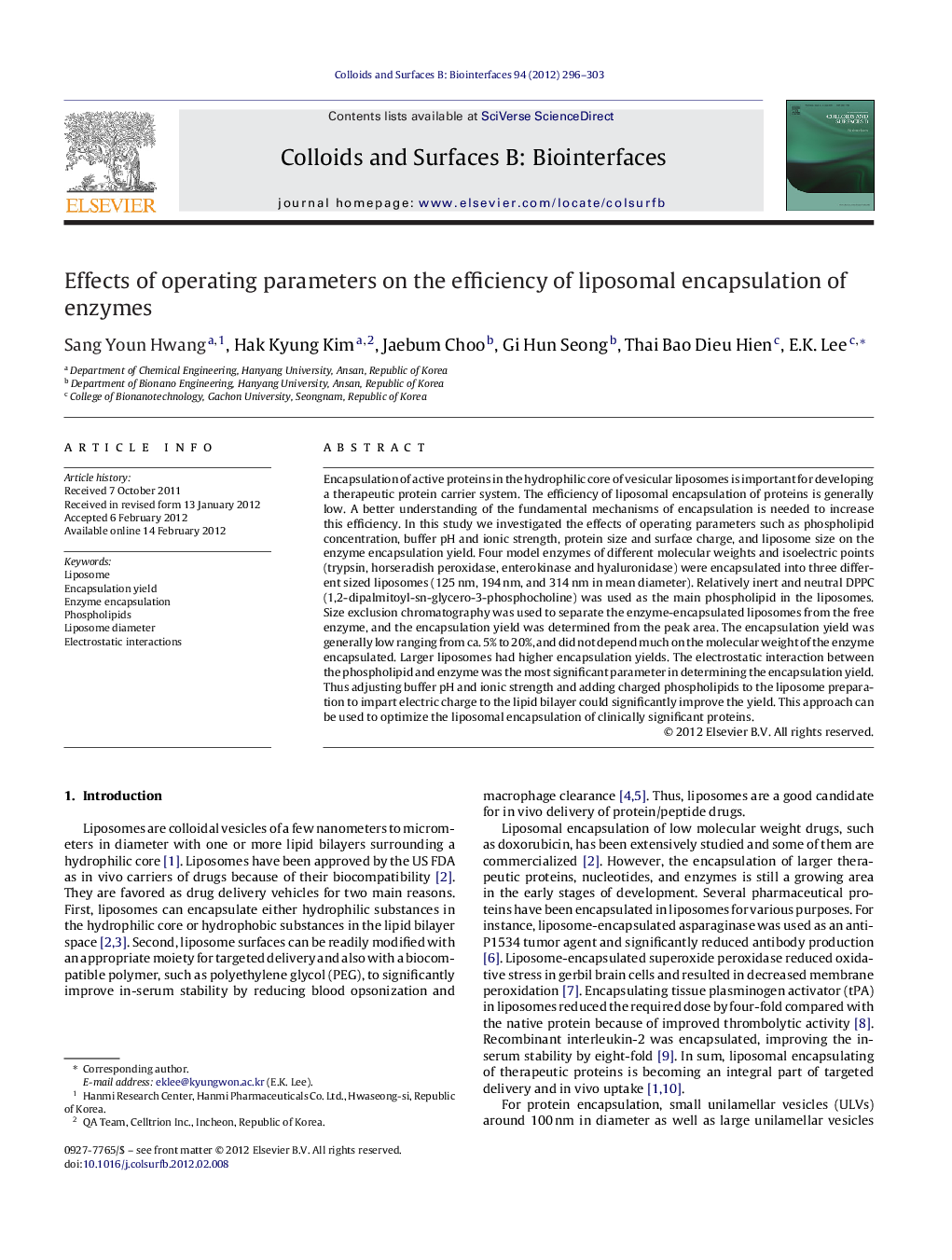| Article ID | Journal | Published Year | Pages | File Type |
|---|---|---|---|---|
| 600866 | Colloids and Surfaces B: Biointerfaces | 2012 | 8 Pages |
Encapsulation of active proteins in the hydrophilic core of vesicular liposomes is important for developing a therapeutic protein carrier system. The efficiency of liposomal encapsulation of proteins is generally low. A better understanding of the fundamental mechanisms of encapsulation is needed to increase this efficiency. In this study we investigated the effects of operating parameters such as phospholipid concentration, buffer pH and ionic strength, protein size and surface charge, and liposome size on the enzyme encapsulation yield. Four model enzymes of different molecular weights and isoelectric points (trypsin, horseradish peroxidase, enterokinase and hyaluronidase) were encapsulated into three different sized liposomes (125 nm, 194 nm, and 314 nm in mean diameter). Relatively inert and neutral DPPC (1,2-dipalmitoyl-sn-glycero-3-phosphocholine) was used as the main phospholipid in the liposomes. Size exclusion chromatography was used to separate the enzyme-encapsulated liposomes from the free enzyme, and the encapsulation yield was determined from the peak area. The encapsulation yield was generally low ranging from ca. 5% to 20%, and did not depend much on the molecular weight of the enzyme encapsulated. Larger liposomes had higher encapsulation yields. The electrostatic interaction between the phospholipid and enzyme was the most significant parameter in determining the encapsulation yield. Thus adjusting buffer pH and ionic strength and adding charged phospholipids to the liposome preparation to impart electric charge to the lipid bilayer could significantly improve the yield. This approach can be used to optimize the liposomal encapsulation of clinically significant proteins.
Graphical abstractFigure optionsDownload full-size imageDownload as PowerPoint slideHighlights► We performed mechanistic studies on how the yield of liposomal enzyme encapsulation is influenced by the physical parameters. ► Using unilamellar DPPC liposome, the effects of liposome size, enzyme molecular weight and isoelectric point were focused. ► Electrostatic interaction between enzyme surface and bilayer phospholipid was the most critical factor that determined the encapsulation yield.
